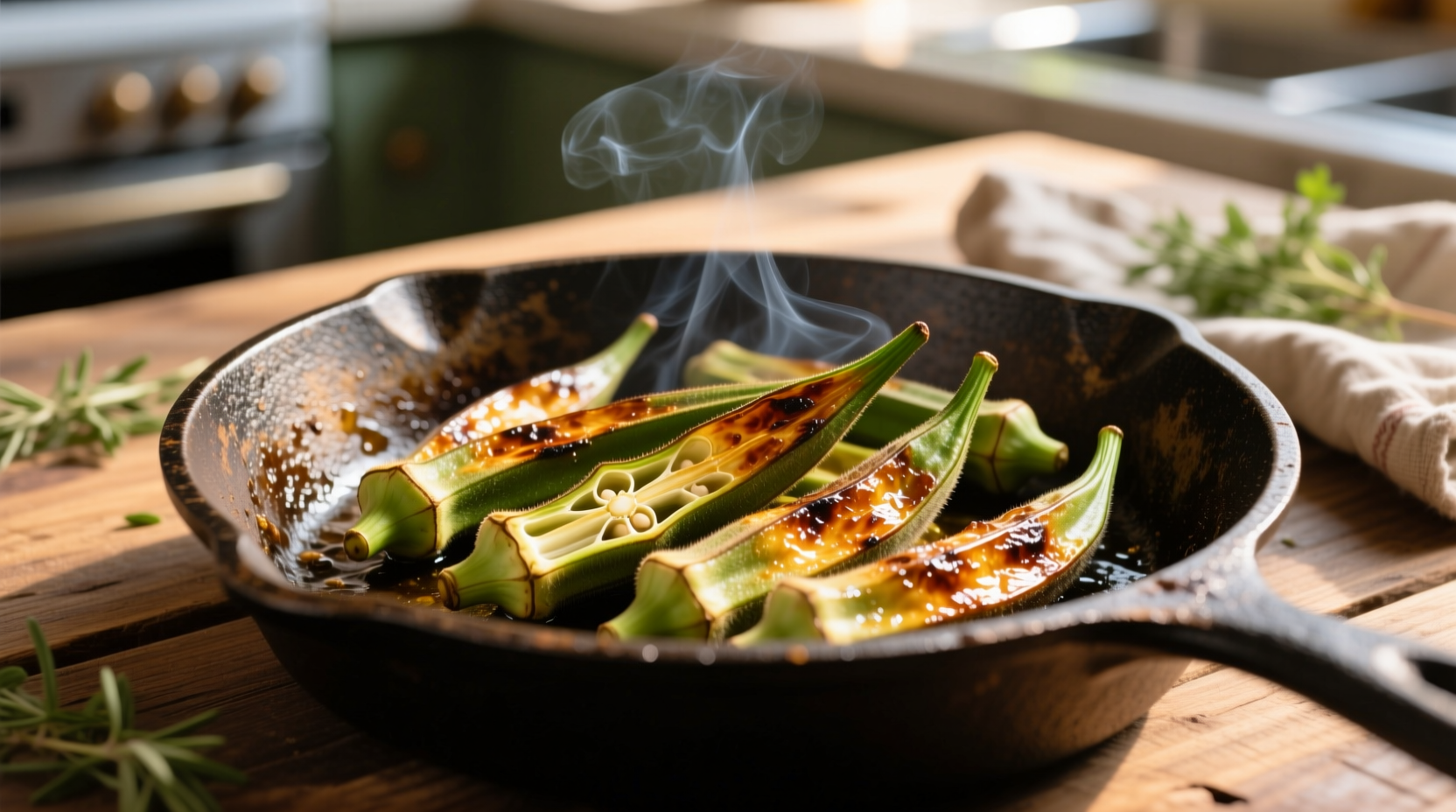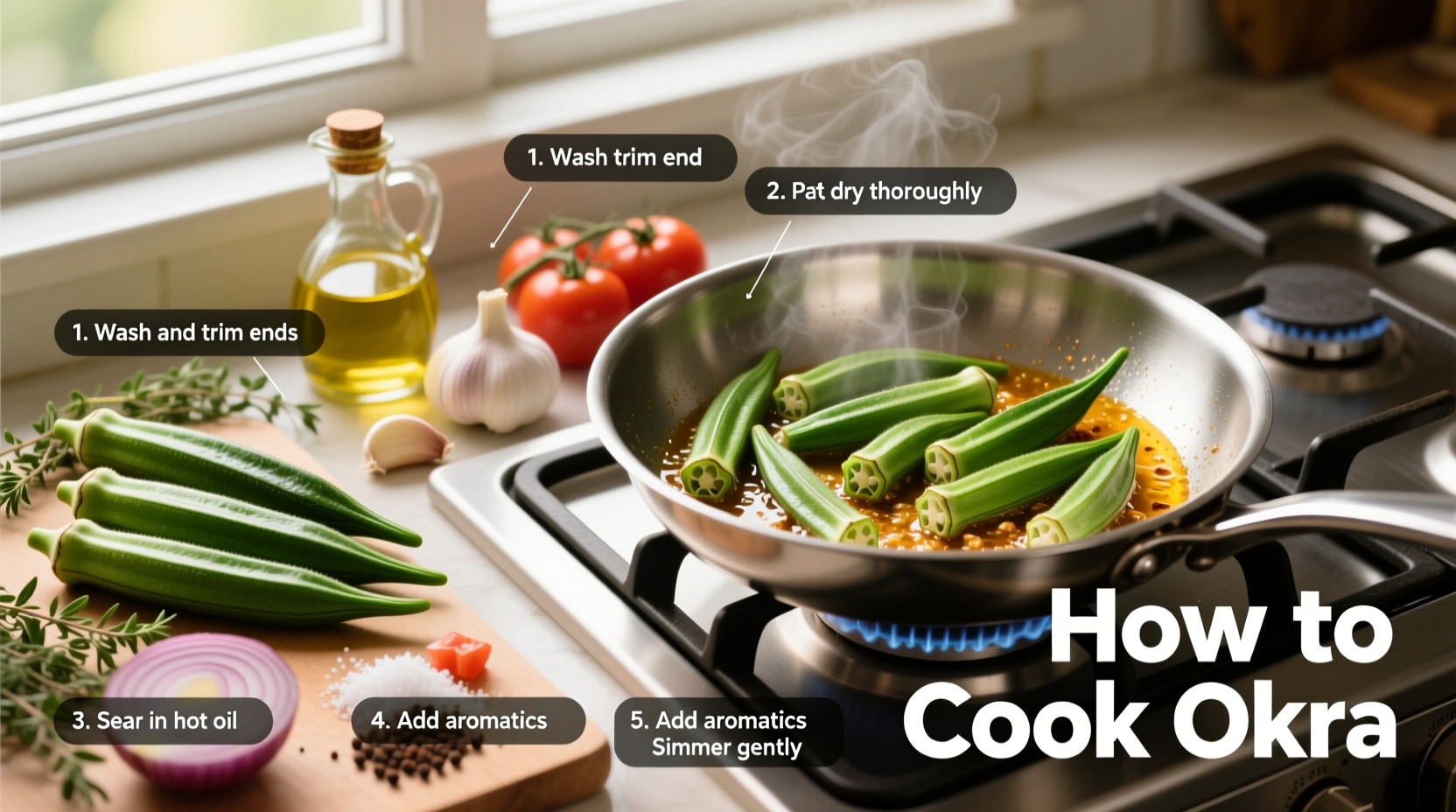Mastering Okra: Your Complete Guide to Non-Slimy, Flavorful Results
If you've ever avoided cooking okra because of its reputation for sliminess, you're not alone. But with the right techniques, this nutrient-rich vegetable transforms into a crispy, flavorful delight. As a chef who's worked with okra across diverse culinary traditions, I've perfected methods that consistently deliver non-slimy results.
Selecting and Storing Fresh Okra
The journey to perfect okra begins at selection. Choose pods that are bright green, firm, and no longer than 4 inches. According to the Texas A&M AgriLife Extension, smaller pods contain less mature seeds and produce less mucilage during cooking. Avoid any with dark spots or soft areas.
For optimal freshness, store unwashed okra in a paper bag in your refrigerator's crisper drawer. The University of Georgia Cooperative Extension recommends consuming within 2-3 days for best texture and flavor. Never wash okra until you're ready to cook—it retains moisture that contributes to sliminess.
Preparation Techniques That Prevent Sliminess
The secret to non-slimy okra starts with proper preparation:
- Dry thoroughly: After washing, pat pods completely dry with paper towels
- Acid treatment: Soak in vinegar-water solution (1:4 ratio) for 15 minutes before cooking
- Keep pods intact: Slice just before cooking to minimize exposed surface area
- Dry heat first: Roast or grill whole pods before incorporating into stews
Professional chefs often use the "dry then wet" principle—applying dry heat methods first to seal the exterior before adding to liquid-based dishes. This technique, documented by the Southern Foodways Alliance, has been used in traditional Southern cooking for generations to manage okra's texture.
| Cooking Method | Temperature | Time | Best For |
|---|---|---|---|
| Pan-frying | Medium-high heat | 8-10 minutes | Crispy texture, small batches |
| Roasting | 425°F (220°C) | 20-25 minutes | Even cooking, large quantities |
| Stewing | Gentle simmer | 30-45 minutes | Gumbos, soups, traditional dishes |
| Air frying | 400°F (200°C) | 12-15 minutes | Oil-minimal crispy results |
Four Foolproof Cooking Methods
Pan-Frying for Perfect Crispness
Heat 2 tablespoons of oil in a cast-iron skillet over medium-high heat. Add dried okra pods in a single layer—never overcrowd the pan. Cook undisturbed for 3-4 minutes until golden brown, then flip and cook another 4-5 minutes. The key to how to cook okra without sliminess is maintaining high heat and avoiding stirring too frequently. Season with salt and a squeeze of lemon juice just before serving.

Roasting for Hands-Off Excellence
Toss dried okra with 1 tablespoon oil, salt, and your choice of spices. Spread in a single layer on a parchment-lined baking sheet. Roast at 425°F (220°C) for 20-25 minutes, flipping halfway through, until crispy and caramelized. This method of how to cook okra in oven delivers consistent results with minimal attention required.
Traditional Stewing Technique
For gumbos and stews, add okra to hot oil and "sweat" for 5-7 minutes before adding other ingredients. The Louisiana State University Agricultural Center notes that this "okra sweat" technique releases some mucilage upfront, preventing excessive thickening later in the cooking process. Stir occasionally until the okra reduces in volume by about one-third before proceeding with your recipe.
Air Frying for Health-Conscious Cooks
Toss dried okra with minimal oil (1 teaspoon per pound) and seasonings. Air fry at 400°F (200°C) for 12-15 minutes, shaking the basket halfway through. This approach to how to cook okra without oil delivers impressive crispness with significantly less fat than traditional frying.
Troubleshooting Common Okra Problems
Problem: Excessive sliminess
Solution: Increase cooking temperature and reduce cooking time. Add acidic ingredients like tomatoes or lemon juice during cooking.
Problem: Soggy texture
Solution: Ensure okra is thoroughly dried before cooking. Avoid adding cold ingredients to the pan.
Problem: Uneven cooking
Solution: Cut pods to uniform size. Cook in smaller batches if pan-frying.
Serving Suggestions and Pairings
Perfectly cooked okra shines when paired with complementary flavors. Serve roasted okra with lemon-tahini dressing, or pair pan-fried okra with fresh tomatoes and garlic. In traditional West African cuisine, okra often appears in soups with shrimp and tomatoes—a combination documented by culinary anthropologists as traveling from Africa to the American South during the transatlantic slave trade.
For meal planning, consider these pairings:
- With grilled fish and lemon-dill sauce
- As a side to braised short ribs
- In tomato-based stews with bell peppers
- With cornbread for a classic Southern meal
Maximizing Nutritional Benefits
Okra contains valuable nutrients including vitamin C, folate, and fiber. The USDA National Nutrient Database shows that one cup of cooked okra provides approximately 3 grams of dietary fiber and significant amounts of vitamins K and C. To preserve maximum nutrition, avoid overcooking and use minimal water when preparing.











 浙公网安备
33010002000092号
浙公网安备
33010002000092号 浙B2-20120091-4
浙B2-20120091-4